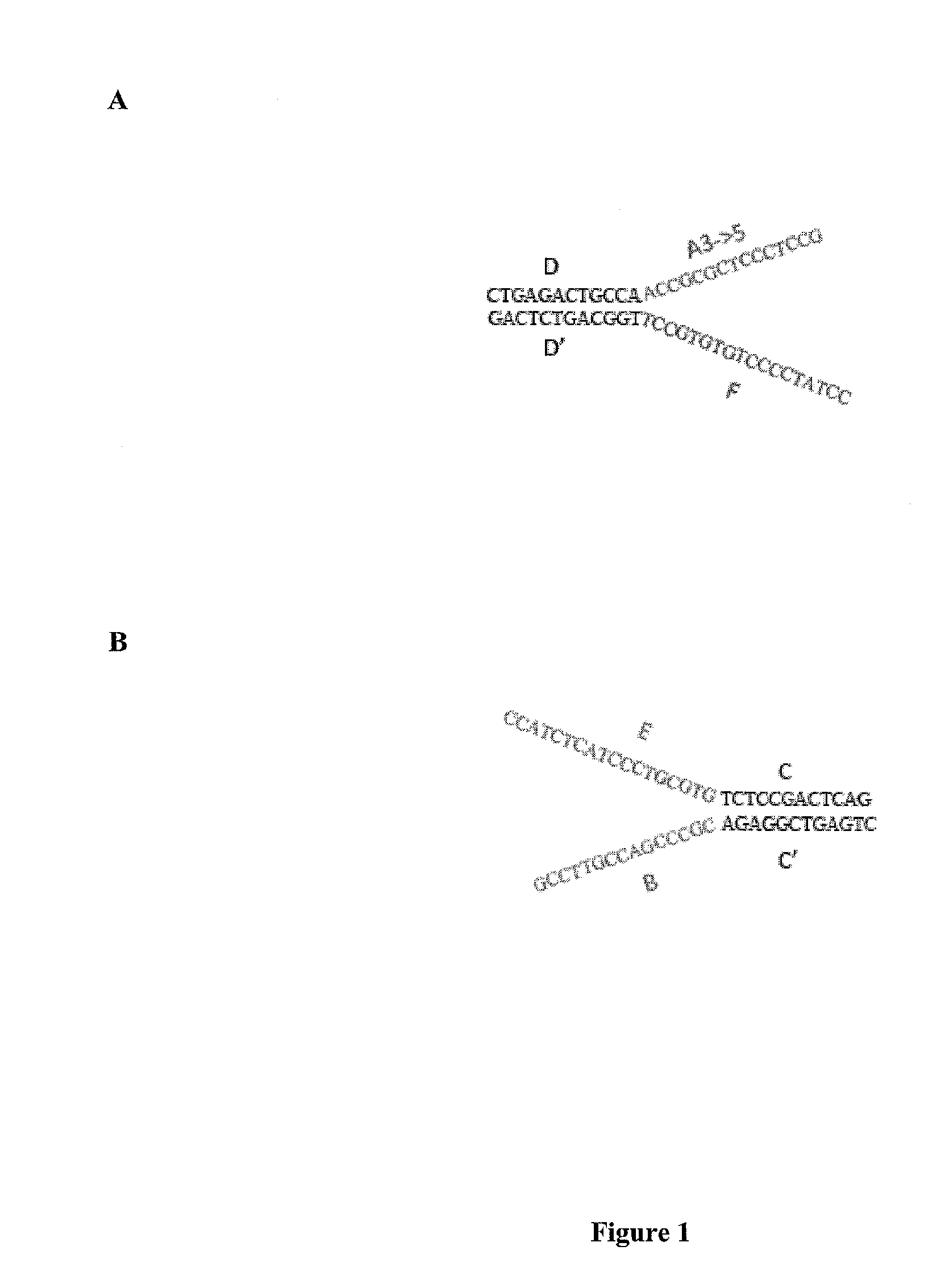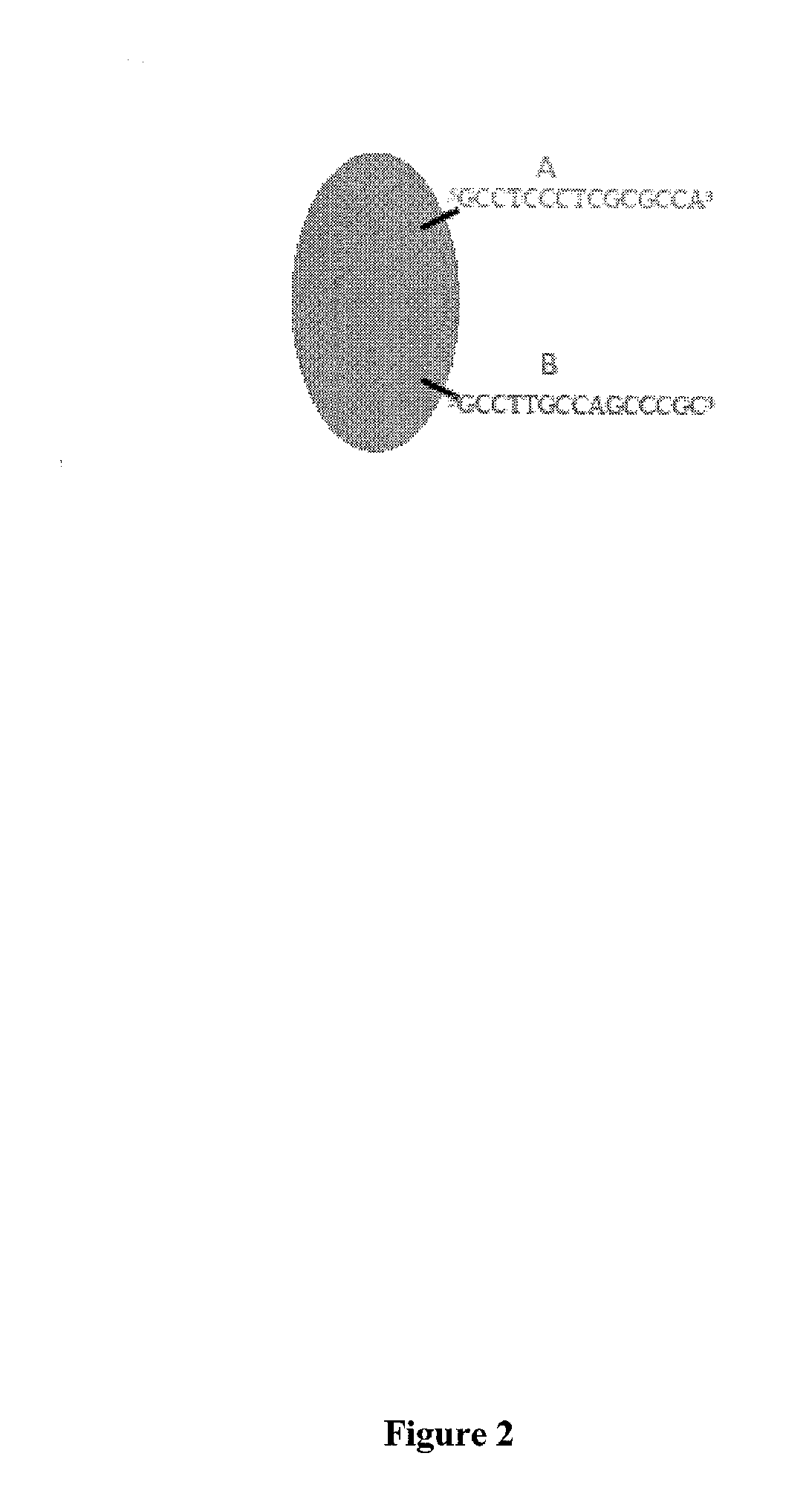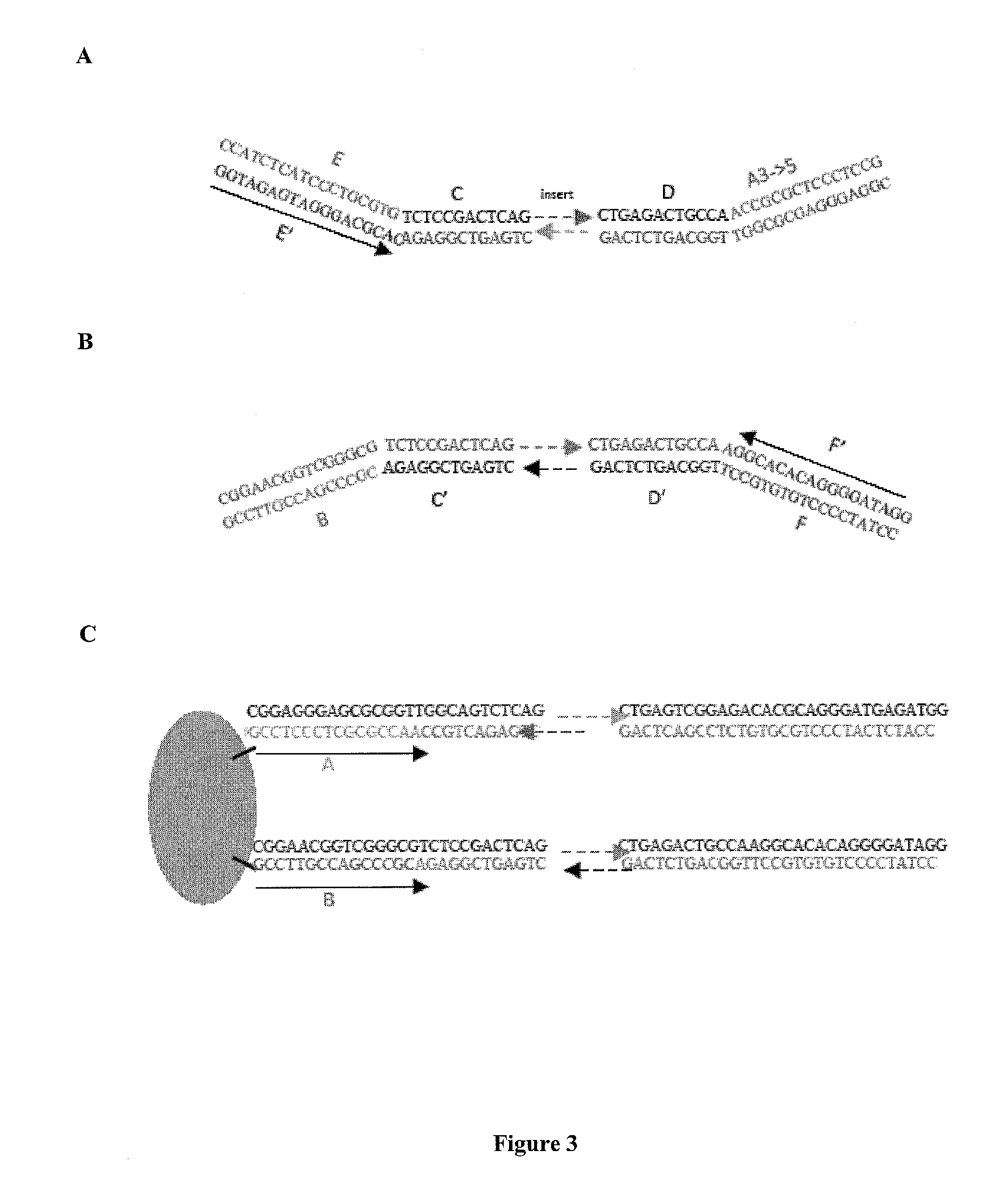Paired end bead amplification and high throughput sequencing
a technology of paired end beads and sequencing methods, applied in the field of genomic nucleotide sequencing, can solve the problems of limited scope of sequencing projects, unrivaled resource of genetic information, and driven down the cost of dna sequence data
- Summary
- Abstract
- Description
- Claims
- Application Information
AI Technical Summary
Benefits of technology
Problems solved by technology
Method used
Image
Examples
example i
Bead Co-Localization of Genomic Fragment DNA Strands
[0142]Streptavidin-coated magnetic beads (M280 Dynal beads, Invitrogen) were coated with a biotinylated oligo A and a biotinylated oligo B.
[0143]A DNA library was created with forked adapter primer pairs comprising oligo A and oligo B by in an emulsion PCR amplification onto beads. The amplification solution contained emulsion primers compatible with the forked adapter primer pairs and beads attached to the 5′ ends of a first primer specific for oligo A and the 5′ end of a second primer specific for oligo B.
[0144]Fluorescently labeled sequencing primers (Read 1 Seq primer; green fluorescent probe and Read 2 Sequencing primer; red fluorescent probe) were annealed to the bead bound ePCR product, such that the beads were visualized using conventional laser illumination and detection technology. See, FIG. 5. Photomicrographs of the fluorescent emission spectra confirmed that oligo A and oligo B were co-localized on the same bead. See, ...
PUM
| Property | Measurement | Unit |
|---|---|---|
| Tm | aaaaa | aaaaa |
| time | aaaaa | aaaaa |
| temperature | aaaaa | aaaaa |
Abstract
Description
Claims
Application Information
 Login to View More
Login to View More - R&D
- Intellectual Property
- Life Sciences
- Materials
- Tech Scout
- Unparalleled Data Quality
- Higher Quality Content
- 60% Fewer Hallucinations
Browse by: Latest US Patents, China's latest patents, Technical Efficacy Thesaurus, Application Domain, Technology Topic, Popular Technical Reports.
© 2025 PatSnap. All rights reserved.Legal|Privacy policy|Modern Slavery Act Transparency Statement|Sitemap|About US| Contact US: help@patsnap.com



